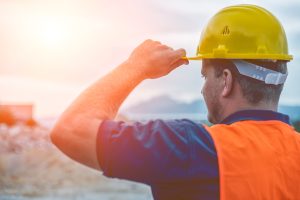
Steps to Successfully Plan Your Office Building Construction
Planning an office building is a major undertaking with countless details that need to be managed effectively. If you’re in Omaha and considering office building construction, laying out a comprehensive plan from the beginning is key. This process ensures not only that the construction runs smoothly but also that the final result meets your business’s needs and goals. From budgeting to selecting a prime location, each step decides the success of your project. Now, let’s explore why your planning process is so important. A well-thought-out plan addresses all necessary aspects, minimizes potential risks, and ensures the project stays on track. Especially in Omaha, where local regulations and specific building standards must be met, a solid plan isn’t just helpful—it’s necessary. This section will guide you through the initial steps to help you prepare effectively for your office building venture. Initial Planning Steps The first step in planning your office building construction in Omaha involves setting clear goals and objectives. Determining the purpose of the building and the specific features it should include helps guide all subsequent decisions. Ask yourself what you want the building to achieve and what needs it should fulfill for your employees and clients. Having a clear picture will streamline the planning process. Next, choose the right location. Omaha offers a variety of sites that could suit different business needs. When selecting a location, consider accessibility, nearby amenities, and potential for future growth. It’s also important to review Omaha’s zoning laws and construction regulations to ensure your building complies with all legal requirements. Budgeting might not be the most exciting part of planning, but it’s crucial. Establish a realistic budget that accounts for all anticipated costs, from permits and materials to labor and unexpected expenses. This will help keep financial surprises at bay and allow for smoother decision-making down the line. Remember, a well-planned budget often helps avoid costly overruns. By focusing on setting clear objectives, carefully selecting a location, and establishing a practical budget, the foundation for a successful office building project in Omaha is effectively laid. Taking these initial planning steps ensures you’re prepared for the tasks that lie ahead, setting your project up for success. Design and Pre-Construction Phase Once you’ve laid the groundwork with a solid plan and a clear budget, it’s time to focus on design and pre-construction milestones. This phase involves bringing your vision to life on paper with the help of experts. Working with knowledgeable architects and designers makes a huge difference. They’re adept at translating your objectives into a functional and beautiful design that aligns with both your budget and goals. Aim for a design that not only looks great but also enhances workflow and productivity. Legal requirements are another critical aspect. In Omaha, obtaining the necessary permits and approvals from local authorities is non-negotiable. This step might seem fuelled with paperwork, but it ensures that all regulatory standards are met, preventing future setbacks. Ensuring all documentation is in order before construction starts simplifies future inspections. Bringing in a skilled construction management team is invaluable during pre-construction. Their expertise in coordinating various elements saves time and money and helps keep the project on schedule. This kind of team also offers insights into materials and methods that could help optimize your budget. Construction Phase Here comes the actual building process. The construction phase is where all the planning takes physical form. Creating a detailed project timeline before breaking ground can guide the process significantly. By sticking to this timeline, you maintain momentum and avoid unnecessary delays. During this phase, prioritizing quality control and safety standards should be a core focus. Construction sites have inherent risks, so applying rigorous safety protocols protects workers and minimizes potential liability. Regular site visits and monitoring keep quality under check, ensuring the building meets the designed criteria. Communication plays a key role in keeping stakeholders informed and involved. Whether it’s updating them about progress or addressing concerns, steady communication ensures everyone remains on the same page, reducing the likelihood of misunderstandings or errors. Final Steps and Bringing Your Vision to Life As your office building nears completion, final inspections hold paramount importance. Addressing any deficiencies found during these inspections ensures no stone is left unturned, setting the stage for a smooth project handover. Planning the move-in process for employees and equipment involves coordination but marks the exciting phase where your building comes alive. Closing out the project includes settling any remaining financials, ensuring that contractors and suppliers have been paid, and all necessary documentation is secured. Reflecting on the project from concept to completion validates the effort and careful planning invested. Recapping the steps taken—starting with defining goals, choosing the right Omaha location, budgeting, working through design, construction, and finalization—highlights the importance of each phase. By adhering to a well-structured plan, you can see your office building project flourish, serving as a testament to thorough preparation and strategic management.Completing your office building project in Omaha demands thorough planning and expert execution from start to finish. For a seamless experience and to ensure your vision turns into reality, consider enlisting professional help. To learn more about how PC Construction can assist with your office building construction in Omaha, feel free to contact us. Our team looks forward to supporting you in creating a dynamic and productive workspace.







